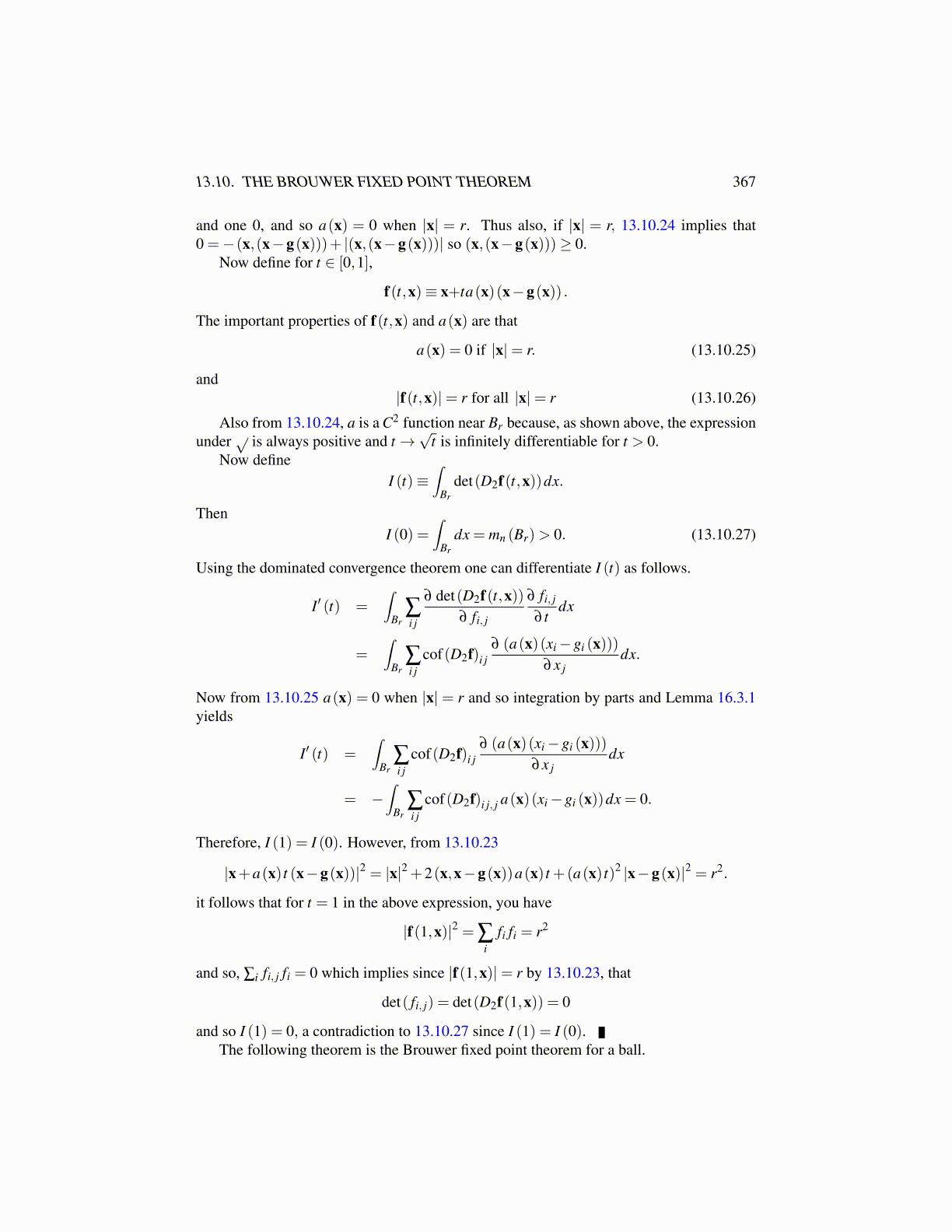
13.10. THE BROUWER FIXED POINT THEOREM 367
and one 0, and so a(x) = 0 when |x| = r. Thus also, if |x| = r, 13.10.24 implies that0 =−(x,(x−g(x)))+ |(x,(x−g(x)))| so (x,(x−g(x)))≥ 0.
Now define for t ∈ [0,1],
f(t,x)≡ x+ta(x)(x−g(x)) .
The important properties of f(t,x) and a(x) are that
a(x) = 0 if |x|= r. (13.10.25)
and|f(t,x)|= r for all |x|= r (13.10.26)
Also from 13.10.24, a is a C2 function near Br because, as shown above, the expressionunder √ is always positive and t→
√t is infinitely differentiable for t > 0.
Now defineI (t)≡
∫Br
det(D2f(t,x))dx.
ThenI (0) =
∫Br
dx = mn (Br)> 0. (13.10.27)
Using the dominated convergence theorem one can differentiate I (t) as follows.
I′ (t) =∫
Br∑i j
∂ det(D2f(t,x))∂ fi, j
∂ fi, j
∂ tdx
=∫
Br∑i j
cof(D2f)i j∂ (a(x)(xi−gi (x)))
∂x jdx.
Now from 13.10.25 a(x) = 0 when |x| = r and so integration by parts and Lemma 16.3.1yields
I′ (t) =∫
Br∑i j
cof(D2f)i j∂ (a(x)(xi−gi (x)))
∂x jdx
= −∫
Br∑i j
cof(D2f)i j, j a(x)(xi−gi (x))dx = 0.
Therefore, I (1) = I (0). However, from 13.10.23
|x+a(x) t (x−g(x))|2 = |x|2 +2(x,x−g(x))a(x) t +(a(x) t)2 |x−g(x)|2 = r2.
it follows that for t = 1 in the above expression, you have
|f(1,x)|2 = ∑i
fi fi = r2
and so, ∑i fi, j fi = 0 which implies since |f(1,x)|= r by 13.10.23, that
det( fi, j) = det(D2f(1,x)) = 0
and so I (1) = 0, a contradiction to 13.10.27 since I (1) = I (0).The following theorem is the Brouwer fixed point theorem for a ball.